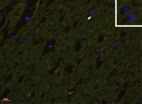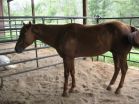(Press-News.org) A new study published online in the journal Nature suggests it might be possible to develop vaccines to prevent premature birth and other pregnancy complications. If so, such vaccines would be the first intended to stimulate the subset of regulatory CD4 T cells that suppress the immune response.
Current vaccines are specifically designed to stimulate T cell subsets that activate the immune response.
The study, led by a researcher at Cincinnati Children's Hospital Medical Center, shows the immune system of a pregnant mother stimulates cells that selectively prevent attack and rejection of fetal tissues recognized as being foreign. Importantly, these pregnancy-induced, immune suppressive regulatory T cells are retained after delivery, and rapidly re-accumulate and provide protection in subsequent pregnancy.
Successful pregnancy requires the ability to tolerate antigens inherited from the father. These antigens evoke an immune response by the mother's immune system, which considers these antigens foreign. If the mother gets pregnant again, these T cells remember the first pregnancy and provide additional protection to the fetus from being attacked by the mother's own immune system.
"We show definitively immune suppressive regulatory CD4 cells can form immunological memory," says Sing Sing Way, MD PhD, a physician researcher in Infectious Diseases at Cincinnati Children's and the study's senior author. "These memory features shown in pregnancy illustrate why complications become reduced in subsequent compared with primary pregnancy, but can also be broadly applied to new ways to better control the stringent balance between immune stimulation and suppression for preventing autoimmune diseases."
Way and his colleagues demonstrate that the protective program during pregnancy is established by the expansion and retention of regulatory T cells that specifically recognize fetal antigens.
"Knowing this, we can design vaccines that specifically target immune suppressive T cells," explains Dr. Way. "Current vaccines exclusively target immune activating T cells. With the polio vaccine, for example, vaccination is designed to induce long-lasting immune-activating cells that eradicate the virus with later infection. A vaccine that targets the expansion and retention of immune suppressive cells would allow selective silencing of undesired responses and prevent them from attacking the body."
Having shown that these cells can generate and retain immunological memory might make it possible to develop vaccines against autoimmune disorders – such as juvenile idiopathic arthritis and type 1 diabetes – in which the body's immune system attacks its own healthy tissues.
###Dr. Way conducted the study in mouse models of pregnancy with colleagues from the University of Minnesota School of Medicine. This research was supported by NIH-NIAID awards R01AI087830 and R01AI100934 (S.S.W.), and NIH-NIDDK award F30DK084674 (J.H.R.). S.S.W. holds an Investigator in the Pathogenesis of Infectious Disease award from the Burroughs Wellcome Fund.
Pregnancy generates maternal immune-suppressive cells that protect the fetus
2012-09-27
ELSE PRESS RELEASES FROM THIS DATE:
Researchers define 2 categories of multiple sclerosis patients
2012-09-27
BOSTON, MA—There are approximately 400,000 people in the United States with multiple sclerosis. Worldwide, the number jumps to more than 2.1 million people. Rather than a one-size-fits-all approach to treating the millions with multiple sclerosis, what if doctors could categorize patients to create more personalized treatments? A new study by researchers at Brigham and Women's Hospital (BWH) may one day make this idea a reality in the fight against the debilitating autoimmune disease.
A research team led by Philip De Jager, MD, PhD, BWH Department of Neurology, senior ...
Touch-sensitive tentacles catapult prey into carnivorous plant traps
2012-09-27
Swift predators are common in the animal world but are rare in the plant kingdom. New research shows that Drosera glanduligera, a small sundew from southern Australia, deploys one of the fastest and most spectacular trapping mechanisms known among carnivorous plants.
The study, published Sep. 26 in the open access journal PLOS ONE, is a collaboration between the Plant Biomechanics Group at the University of Freiburg and private sundew cultivators from Weil am Rhein, and provides the first experimental demonstration of fast-moving snap tentacles in sundew plants propelling ...
Large 2012 earthquake triggered temblors worldwide for nearly a week
2012-09-27
This year's largest earthquake, a magnitude 8.6 temblor on April 11 centered in the East Indian Ocean off Sumatra, did little damage, but it triggered quakes around the world for at least a week, according to a new analysis by seismologists from the University of California, Berkeley, and the U.S. Geological Survey (USGS).
The April 11 quake was unusually large – the tenth largest in the last 100 years and, similar to a few other recent large quakes, triggered small quakes during the three hours it took for seismic waves to travel through Earth's crust.
The new study ...
Cannabis withdrawal symptoms might have clinical importance
2012-09-27
Cannabis users have a greater chance of relapse to cannabis use when they experience certain withdrawal symptoms, according to research published Sep. 26 in the open access journal PLOS ONE led by David Allsop of the National Cannabis Prevention and Information Centre (NCPIC) at the University of New South Wales.
The authors tested a group of dependent cannabis users over a two week period of abstinence for impairment related to their withdrawal symptoms. Findings were correlated with the probability of relapse to cannabis use during the abstinence period, and the level ...
First evidence of fetal DNA persisting in human brain tissue
2012-09-27
Small portions of male DNA, most likely left over in a mother's body by a male fetus can be detected in the maternal brain relatively frequently, according to a report published Sep. 26 in the open access journal PLOS ONE by William Chan of Fred Hutchinson Cancer Research Center and his colleagues.
The process, called fetal 'microchimerism (Mc)', is common in other tissues such as blood, but this is the first evidence of male Mc in the human female brain. Microchimerism can be both beneficial and harmful to maternal health, since it is associated with processes such ...
Viewing gender-specific objects influences perception of gender identity
2012-09-27
Spending too much time looking at high heels may influence how a viewer perceives the gender of an androgynous face, according to new research published Sep. 26 in the open access journal PLOS ONE by Amir Homayoun Javadi of Technische Universität, Dresden and his colleagues. The study sheds new light on how the objects surrounding us may influence our perceptions of gender.
The authors found that when people view objects highly associated with one gender, like high heels for women or electric shavers for men, for a short period of time and are then asked to identify the ...
Psychology of equine performance and the biology behind laminitis
2012-09-27
Achieving the best performance from a horse is the goal of not just professional riders, but also the millions of amateur and hobby riders all over the world. A new article published in BioMed Central's open access journal BMC Veterinary Research looks at the issues surrounding training, competition environment and practices, and how the psychology of horse mood, emotion and temperament can be used to enhance performance. A sister article looks at the devastating disease laminitis, and finds that the anti-inflammatory protein apolipoprotein A-IV (APOA-IV) is raised in chronic ...
Scientists make old muscles young again in attempt to combat aging
2012-09-27
An international team of scientists have identified for the first time a key factor responsible for declining muscle repair during ageing, and discovered how to halt the process in mice with a common drug. Although an early study, the findings provide clues as to how muscles lose mass with age, which can result in weakness that affects mobility and may cause falls.
The study, to be published in the journal Nature, involved researchers from King's College London, Harvard University and Massachusetts General Hospital.
The study looked at stem cells found inside muscle ...
TB drug could reduce mortality for MDR-TB and XDR-TB cases
2012-09-27
Results from an observational study evaluating a new anti-TB drug have found that the treatment can improve outcomes and reduce mortality among patients with both MDR-TB and XDR-TB.
The research, published online ahead of print today (27 September 2012) in the European Respiratory Journal, suggests a drug called delamanid could have a public health benefit for MDR-TB and also for XDR-TB, as few effective treatment options are currently available.
Over the past two decades, multidrug-resistant TB (MDR-TB) has emerged as a significant public health threat, with strains ...
Salt marsh carbon may play role in slowing climate warming, study shows
2012-09-27
A warming climate and rising seas will enable salt marshes to more rapidly capture and remove carbon dioxide from the atmosphere, possibly playing a role in slowing the rate of climate change, according to a new study led by a University of Virginia environmental scientist and published in the Sept. 27 issue of the journal Nature.
Carbon dioxide is the predominant so-called "greenhouse gas" that acts as sort of an atmospheric blanket, trapping the Earth's heat. Over time, an abundance of carbon dioxide can change the global climate, according to generally accepted scientific ...





